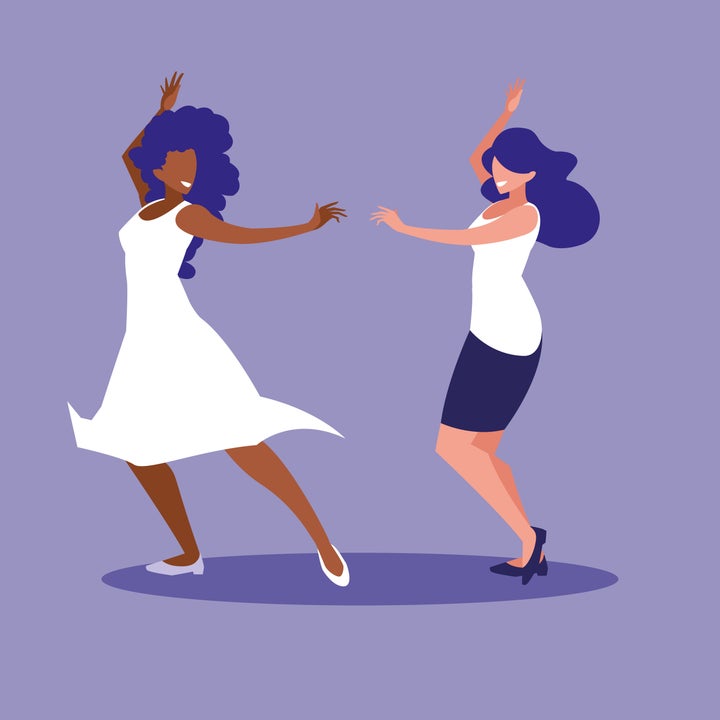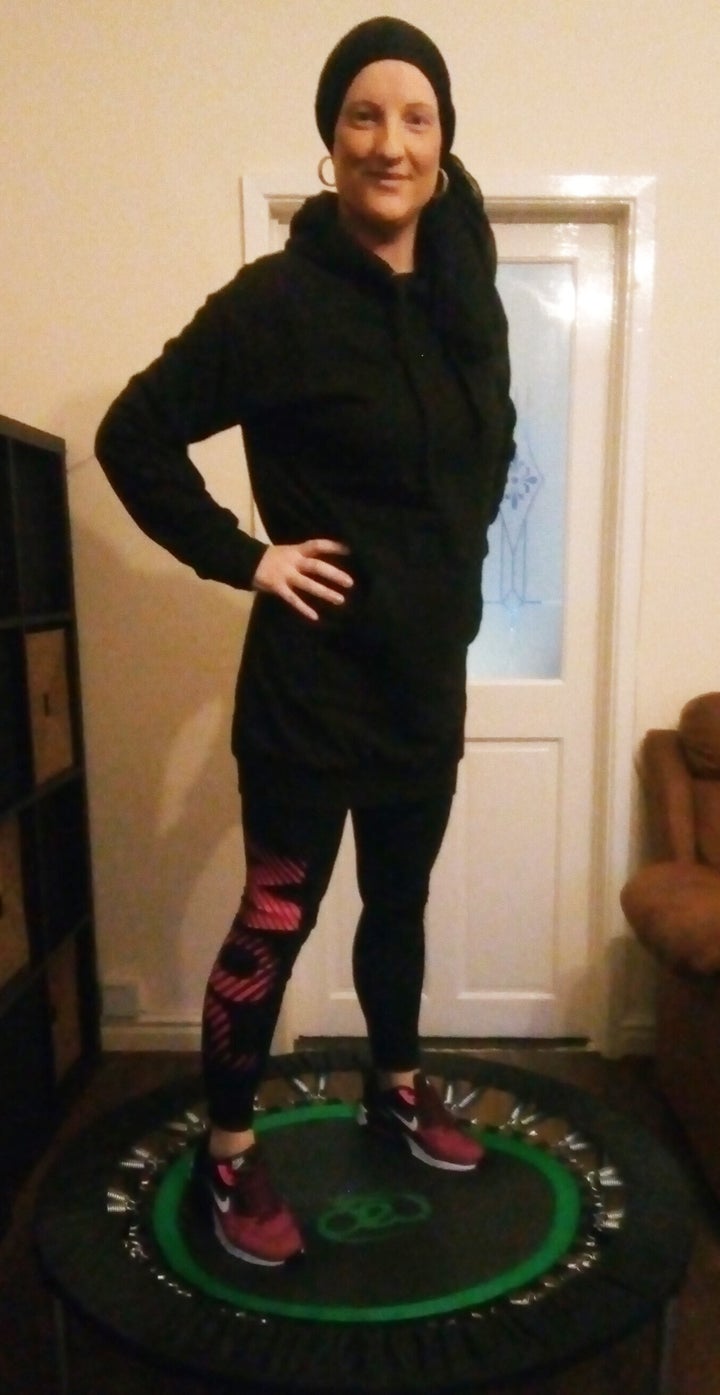We all know regular exercise is key to boosting physical and mental health, but sometimes, the idea of actually doing it feels too much like hard work.
But reframing your mindset around working out, shaking up your routine or establishing a new one, can transform exercise from chore to treat (yes, really). If you’re not smiling, you’re doing it wrong.
Covid has put a halt on gyms and fitness classes for some right now, but you can still learn to discover the joy of working out. Here’s how.
1. Shake off self-consciousness.
It’s not unusual to feel self-conscious when exercising in public, in fact, over a third of people say it’s stopped them from signing up to a gym or going for a run in the past. Take comfort from that fact, by remembering most people are too worried about themselves to be looking at you.
HuffPost UK previously asked readers for their tried-and-tested methods to overcome self-consciousness. Tips included wearing clothes you feel good in, avoiding looking in mirrors and making a banging playlist to distract you.

2. Gamify your workout.
Exercise is always more enjoyable if you make it a game, according to personal trainer Dom Thorpe: “Not necessarily a sport, but something that you can win or take to the next level.”
This could mean signing up to a fitness class such as Rabble (if Covid restrictions allow), which uses low-stakes playground games such as bulldog and dodgeball to work up a sweat outside. Or it could be as simple as monitoring your performance and trying to beat your last workout.
“Whether it’s beating your last performance, beating a friend or beating an opposing team, if you can win at it, it’ll be more enjoyable,” says Thorpe. “Any achievements, big or small, will make you feel better about it.”
3. Ease yourself into it.
Nothing is more off-putting than a workout that leaves you feeling broken, so remember not to push too hard, too quickly.
“The experience itself won’t be enjoyable and there’s very little chance of you coming back for round two,” says Thorpe. “Start at an intensity which is tolerable and increase over time. This way you won’t notice it getting harder and you’ll gradually become used to working at higher intensities.”
Before long, you’ll almost instinctively push harder, dance for longer, jump higher or run further – and nothing is more likely to get you enjoying exercise than that sweet satisfaction.

4. Find something you love doing
Find the idea of going for a run mind-numbingly boring? Don’t do it then. There are hundreds of ways to get fit and if exercise fills you with dread, the chances are, you haven’t found your groove yet.
It might be mindful running, wild swimming, Jiu Jitsu or boxing that sparks the shift. Or perhaps it’s bouncing on a trampoline, learning a new dance style or even engaging in some fitness drumming. Try a workout at home on YouTube first if you’re not able to go to fitness classes right now.
The possibilities are (almost) endless and many taster classes are free. Go forth and experiment!
5. Make exercise a social event.
Using exercise as an excuse to catch up with friends is always better than riding solo – unless you’re training for an event, says Thorpe.
“Granted, you may lower the intensity of the workout because you’ll be having a natter, but a friend is one form of accountability which will ensure that you get out of bed for it in the morning,” he says.
“And if gyms don’t suit you, try a class with a good social aspect. Plenty of small gyms or classes meet with their members for regular socials.”
Still unconvinced? Two HuffPost UK readers tells us how they learned to love exercise in previous years.
‘Create a mental picture of the healthier you’
Shiri Atsmon, 43, from London, runs a business called Helpful Kids and appointed her own daughter, Ella, 13, as her ‘personal trainer’ in 2019.
Ella rose to the challenge, pushing her mum to her limits with Pilates and dumbbell drills at home before the pair graduated onto running. “I started with five minutes and didn’t even manage to make it all the way to the park, but slowly increased the time spent. Now I run 20 minutes almost every day and can even run 5km on the weekends,” Shiri says.

“It’s Ella’s encouragement and training, and my wish to lead by example, that have led me to take on this wonderful new habit that I was longing for.”
Shiri’s top tip for getting into exercise : “Create a detailed mental picture of the healthier you – looking fab, feeling strong and vital, having a huge smile, wearing something you always wanted to wear, whatever works for you. Whenever you don’t feel like exercising, focus on that image and have her invite you for a workout.”
‘Schedule exercise as self-care, me time’
Mayameen Meftahi, 36, from Manchester, says her fitness level at the start of 2019 “was simply non existent”.
“I had no motivation, nor interest in fitness,” says the founder of the She Can Consultancy In 2018, Mayameen had waived her right to lifelong anonymity as a child sexual abuse survivor to share her story and help others. A friend then recommended exercise as a way to release her anxiety. “She booked me on a Rebounding class and reluctantly off I went,” explains Mayameen.

The class is a cross between aerobics and trampolining and despite her initial reluctance, Mayameen was soon sold. “It is a therapy and the physical and emotional benefits are huge,” she says. “There is nothing better than hitting that mini trampoline and getting rid of built up tension.”
Her top tip for enjoying exercise: “Schedule it as self-care, ‘me time’. That way, you will start to feel that it’s serving you, rather than a chore or challenge.”